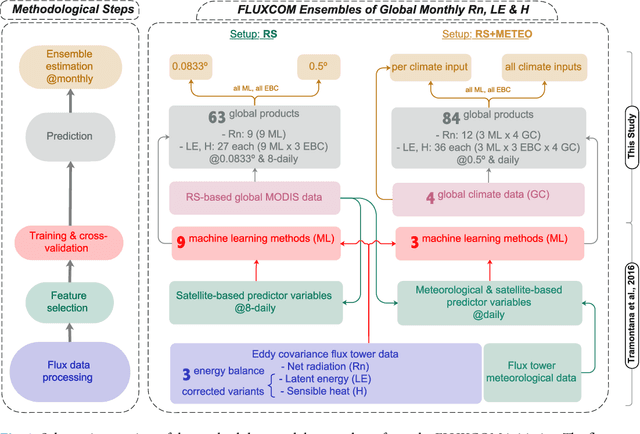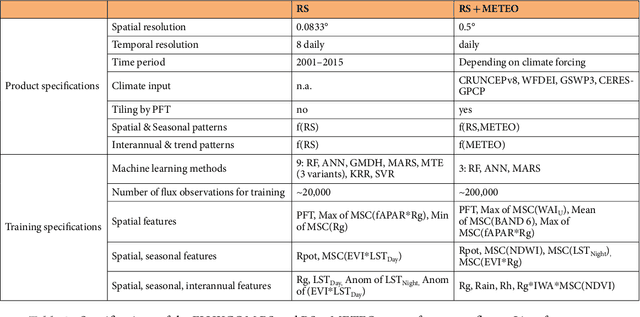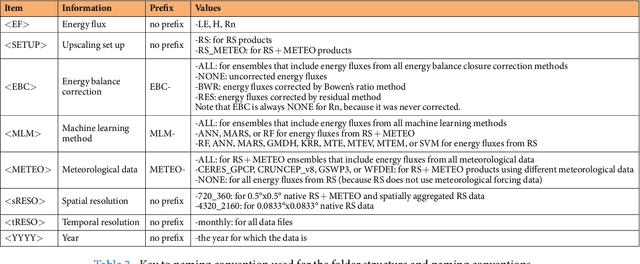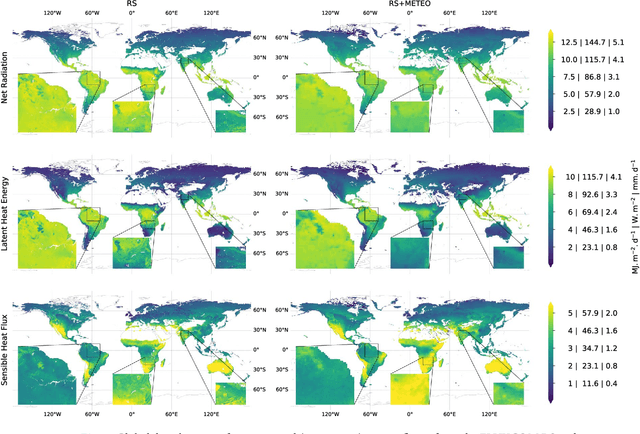Ulrich Weber
The FLUXCOM ensemble of global land-atmosphere energy fluxes
Dec 11, 2018



Abstract:Although a key driver of Earth's climate system, global land-atmosphere energy fluxes are poorly constrained. Here we use machine learning to merge energy flux measurements from FLUXNET eddy covariance towers with remote sensing and meteorological data to estimate net radiation, latent and sensible heat and their uncertainties. The resulting FLUXCOM database comprises 147 global gridded products in two setups: (1) 0.0833${\deg}$ resolution using MODIS remote sensing data (RS) and (2) 0.5${\deg}$ resolution using remote sensing and meteorological data (RS+METEO). Within each setup we use a full factorial design across machine learning methods, forcing datasets and energy balance closure corrections. For RS and RS+METEO setups respectively, we estimate 2001-2013 global (${\pm}$ 1 standard deviation) net radiation as 75.8${\pm}$1.4 ${W\ m^{-2}}$ and 77.6${\pm}$2 ${W\ m^{-2}}$, sensible heat as 33${\pm}$4 ${W\ m^{-2}}$ and 36${\pm}$5 ${W\ m^{-2}}$, and evapotranspiration as 75.6${\pm}$10 ${\times}$ 10$^3$ ${km^3\ yr^{-1}}$ and 76${\pm}$6 ${\times}$ 10$^3$ ${km^3\ yr^{-1}}$. FLUXCOM products are suitable to quantify global land-atmosphere interactions and benchmark land surface model simulations.
 Add to Chrome
Add to Chrome Add to Firefox
Add to Firefox Add to Edge
Add to Edge